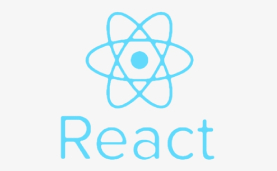React is a JavaScript-based UI development library. Facebook and an open-source developer community run it. Although React is a library rather than a language, it is widely used in web development. The library first appeared in May 2013 and is now one of the most commonly used frontend libraries for web development.
React offers various extensions for entire application architectural support, such as Flux and React Native, beyond mere UI.
React’s popularity today has eclipsed that of all other front-end development frameworks. Here is why:
The above reasons more than justify the popularity of the React library and why it is being adopted by a large number of organizations and businesses. Now let’s familiarize ourselves with React’s features.
React offers some outstanding features that make it the most widely adopted library for frontend app development. Here is the list of those salient features.
JSX is a JavaScript syntactic extension. It’s a term used in React to describe how the user interface should seem. You can write HTML structures in the same file as JavaScript code by utilizing JSX.
const name = ‘Simplilearn’;
const greet = <h1>Hello, {name}</h1>;
The above code shows how JSX is implemented in React. It is neither a string nor HTML. Instead, it embeds HTML into JavaScript code.
The Virtual DOM is React’s lightweight version of the Real DOM. Real DOM manipulation is substantially slower than virtual DOM manipulation. When an object’s state changes, Virtual DOM updates only that object in the real DOM rather than all of them.
DOM (Document Object Model) treats an XML or HTML document as a tree structure in which each node is an object representing a part of the document.
When the state of an object changes in a React application, VDOM gets updated. It then compares its previous state and then updates only those objects in the real DOM instead of updating all of the objects. This makes things move fast, especially when compared to other front-end technologies that have to update each object even if only a single object changes in the web application.
In a Model View Controller(MVC) architecture, React is the ‘View’ responsible for how the app looks and feels.
MVC is an architectural pattern that splits the application layer into Model, View, and Controller. The model relates to all data-related logic; the view is used for the UI logic of the application, and the controller is an interface between the Model and View.
React goes beyond just being a UI framework; it contains many extensions that cover the entire application architecture. It helps the building of mobile apps and provides server-side rendering. Flux and Redux, among other things, can extend React.
Information Source – https://www.simplilearn.com/tutorials/reactjs-tutorial/what-is-reactjs
